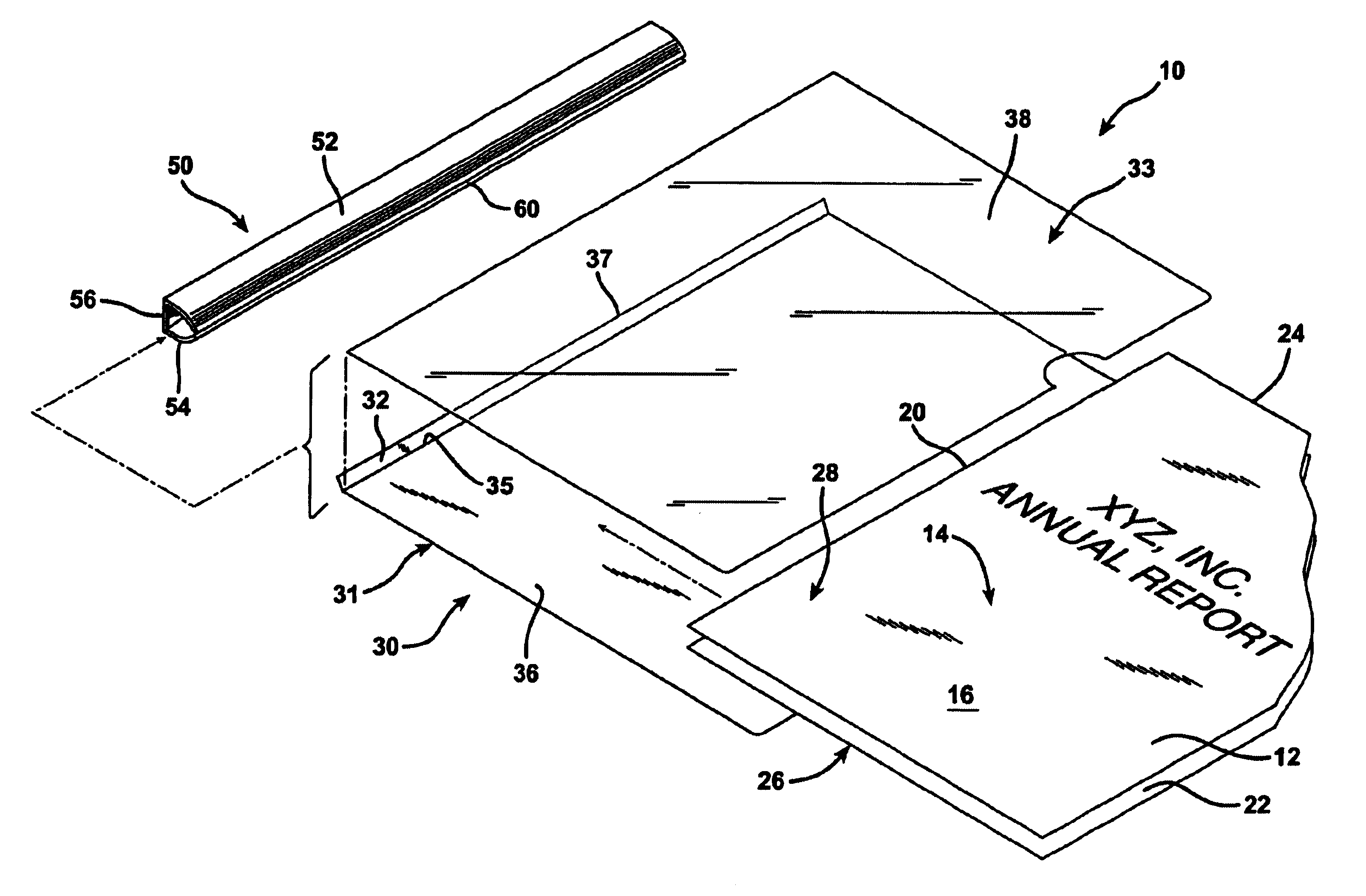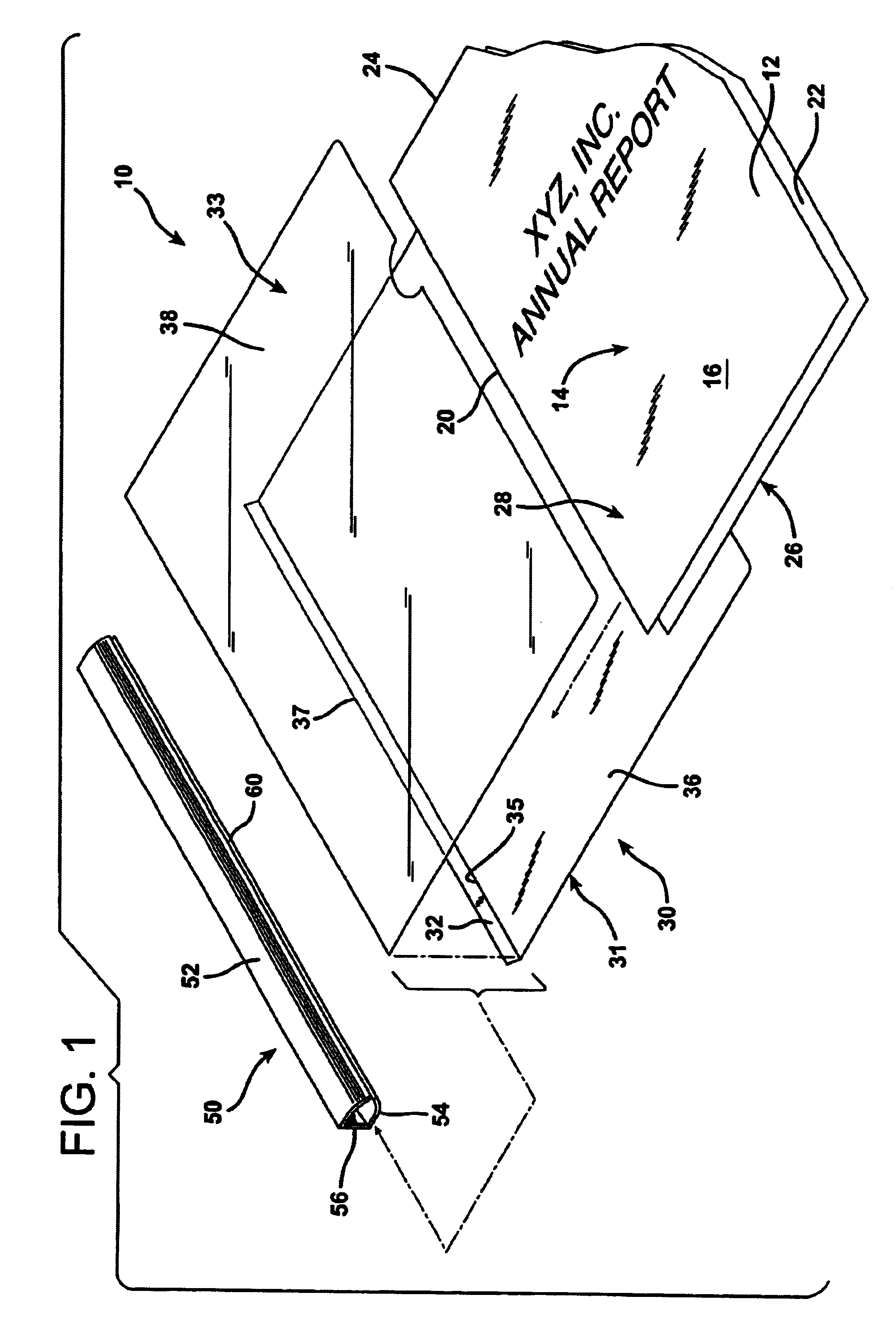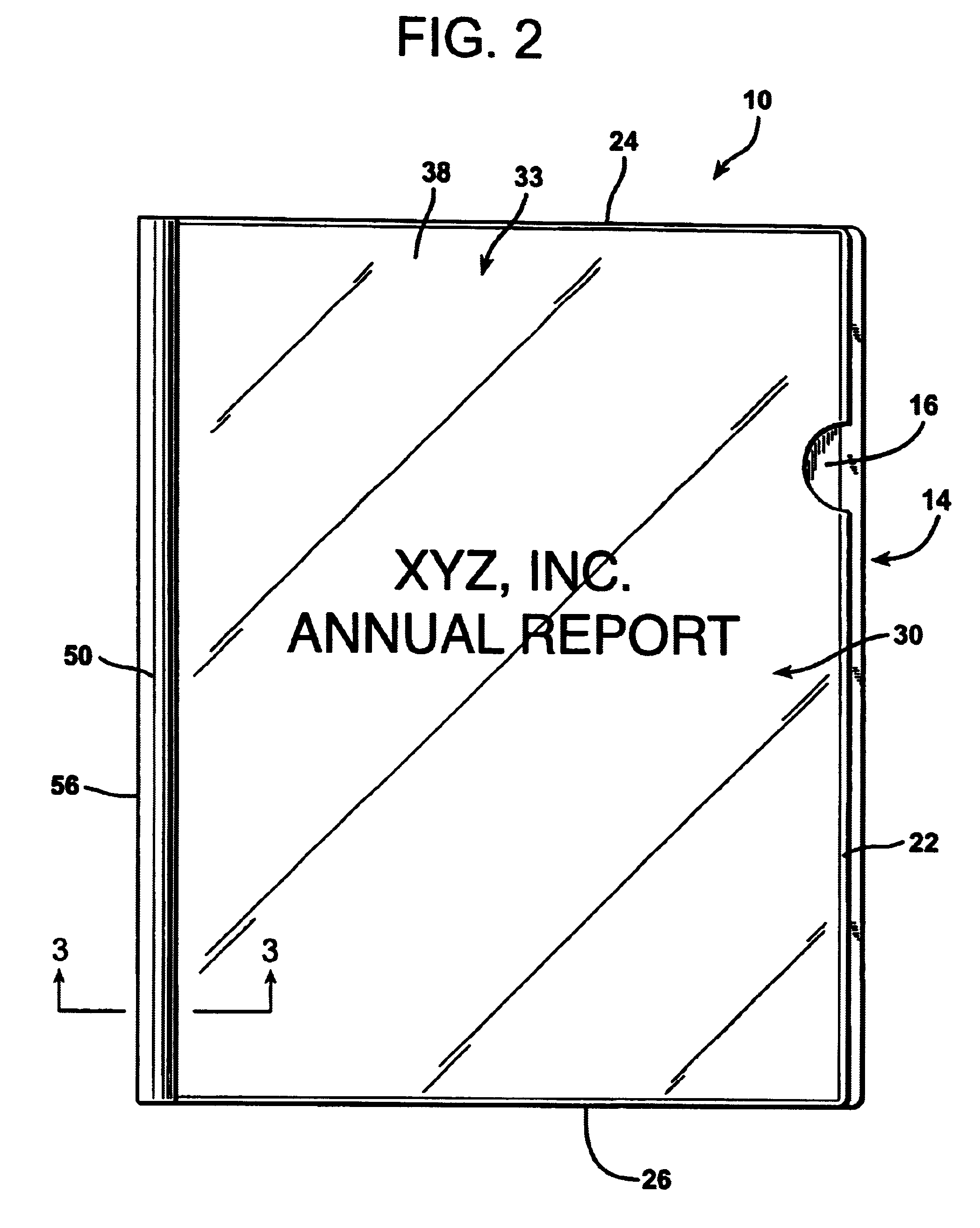Report cover with clamping slide bar
a slide bar and clamping technology, applied in the field of locking slide bars or clasps, can solve the problems of negative interlocking connection, system still has several problems, and the grip force is often inadequate to secure the grip
- Summary
- Abstract
- Description
- Claims
- Application Information
AI Technical Summary
Benefits of technology
Problems solved by technology
Method used
Image
Examples
Embodiment Construction
FIGS. 1, 2, and 3 illustrate the combination of the invention generally at 10. The combination 10 is comprised of a plurality of rectangular sheets of paper 12 disposed one atop another to form a stack of papers indicated generally at 14. The paper sheets 12 may have, for example, a width of eight and one-half inches and a length of eleven inches. The paper stack 14 has a top sheet 16 and a bottom sheet 18. For simplicity of illustration of the stack of papers 14 is shown with only a top sheet 16 and bottom sheet 18, although there may be a very considerable number of additional sheets 12 interposed therebetween.
The stack of papers 14 defines a binding edge indicated at 20 and an opposite edge 22 which is parallel to the binding edge 20. The paper stack 14 also has an upper edge 24 and an opposite lower edge 26. The stack 14 also defines a narrow binding margin 28 which may, for example, be about one-half an inch in width. The binding margin 28 is adjacent to the binding edge 20 of ...
PUM
 Login to View More
Login to View More Abstract
Description
Claims
Application Information
 Login to View More
Login to View More - R&D
- Intellectual Property
- Life Sciences
- Materials
- Tech Scout
- Unparalleled Data Quality
- Higher Quality Content
- 60% Fewer Hallucinations
Browse by: Latest US Patents, China's latest patents, Technical Efficacy Thesaurus, Application Domain, Technology Topic, Popular Technical Reports.
© 2025 PatSnap. All rights reserved.Legal|Privacy policy|Modern Slavery Act Transparency Statement|Sitemap|About US| Contact US: help@patsnap.com



